- Home
- Peter Ackroyd
Thames Page 8
Thames Read online
Page 8
But the most likely crossing point was at Westminster. The first of the Roman roads, Watling Street, makes its way from the coast of Kent to Verulamium some 30 miles north of London; its point of intersection, between north and south, is at Westminster. The tide then stopped at Westminster and the river, flowing south to north along this stretch, spread out across its own floodplain. There were a number of islands or eyots rising from the water. The banks were low.
The river was approximately twice the width of that now running through London and 14 feet (4.2 m) shallower. The river-bank at Southwark, for example, was some 300 feet (91 m) further back than it is now. The Thames wove in coils, its broad curves moving through a marshy riverine landscape; on the south side the grass and osier beds were interrupted by creeks and swamps, while on the north side the banks were covered with scrub. The river was replenished by many tributary streams and rivers that have long since disappeared or vanished underground. At low tide it moved slowly through banks of clean gravel and sand. Downriver from Westminster, dotted among the waters, there were numerous islands that were submerged at high tide. It seems likely that, at times of more favourable climate, the typical round-house dwellings of the Britons were built upon these islands. There were also fluctuations in the river level that can be measured in historical time; throughout the Roman period, for example, the level of the river fell, only to be restored in subsequent centuries. Much of the Roman waterfront is thus irrecoverably lost within the rising waters.
Caesar himself has left a significant account of the raids and fighting during his invasion. The Britons engaged with his forces in sporadic raiding parties, so that “one squadron relieved another and our men, who had been contending against those who were exhausted, suddenly found themselves engaged with a fresh body who had taken their place.” He also remarks that his native enemies were “clad with skins: all the Britons stain themselves with woad, which gives a blue colour, and imparts a ferocious aspect in battle.” Quantities of woad, or Isatis tinctoria, can still be found growing near the Thames.
Some ten years later, in AD 43, another invasion force of the Romans made use of the river. According to the classical historian, Dio Cassius, the British forces were defeated by the Roman legions somewhere along the course of the Medway. After this conflict the remnant of the British forces retreated to a point “where the Thames empties into the ocean and at flood-time forms a lake.” The area of “the lake” is now deeply obscured, the Thames having risen approximately 15 feet (4.5 m) since the events here related, but the most likely site seems to be that of Lower Hope Point in the present estuary. The terrain of one of the most important battles in English history is irrecoverable.
Yet the stage was now set for the arrival of the emperor Claudius. He joined the legions that were waiting for him by the Thames and, crossing the river, defeated the British tribes on the northern shore before marching upon the enemy capital of Colchester. He remained in Britain for just sixteen days, but his mastery of the Thames ensured his mastery of the region itself. It was a signal victory that emphasises the central importance of the river in British history. At a later date there seems to have been more resistance further upriver, and there are reports of battles at Cricklade and at Thames Head; but the evidence is meagre. It is true, however, that the progress of Romanisation was always less evident in the upper reaches of the Thames.
So Caesar’s invasions were followed by the more settled occupation of Claudian legions, and within a hundred years there emerged a group of Romano-British farmers living close to the Thames and its tributaries. There were settlements along the river from source to sea—from Cricklade to Tilbury—and there were many villas and extensive estates to the north of the Thames near the Roman towns of Cirencester and Dorchester. It has been estimated that along the length of the Thames there were approximately six hundred villas that may have been owned by Roman veterans, or by prosperous Romanised natives; whatever the forms of ownership and tenure, it was a period of general affluence for the Thames region.
On the muddy foreshore of the Thames by East Tilbury have been discovered the relics of four large Romano-British huts, with walls of wattle and conical tiled roofs; in the immediate vicinity were large quantities of pottery and, since no kiln was found, it has been concluded that this was some kind of warehouse or storage centre for native ware. The huts were also beside a path which seemed once to lead down to a ferry, so this was also a crossing-point. When these basic huts are compared to the villas beside the Thames, complete with bath-houses and underfloor heating, it is possible to imagine a Thames valley society of landowners and serfs. It was a society that would persist, in one form or another, for many hundreds of years. The site of the huts, and the ferry, has now disappeared beneath the mud of the tidal Thames.
And then of course it is assumed that the Romans created London. It is much more likely, however, that there was already some form of British settlement here; one of the possible derivations of London is Llyn-Din, the British for “the hill by the pool.” But by general agreement the Romans were the first people fully to exploit the natural resources of the area. The original slow and sluggish crossing-point at Westminster was not at all suitable as a port, and so the Romans chose a stretch along the river that was adequately defended, which could provide a harbour, and which was well served by the tides. Romans had a very different vision of the river. It was a line of power, both military and commercial, part of the linear consciousness of the empire. The river had not lost its power of association with the gods—hence the number of Roman relics found within its waters—but it had lost its primaeval sacredness. It was often the case, for example, that Roman roads would run straight through circular barrows and henges as a way of erasing their mythic power. The Romans built the first timber bridge across the Thames in approximately AD 52, with a permanent bridge being constructed at the turn of the first century. In the fourth century London’s walls were extended to defend the riverside itself. The nature of the Thames had changed. It needed to be tamed and protected.
The river served its primary commercial function very well since London was described by the Roman historian Tacitus, just eighteen years after the Claudian invasion, as “though undistinguished by the name of a colony, much frequented by a number of merchants and trading vessels.” From this early date the fortunes of the city were irretrievably tied to the presence of the tidal river. Like all great cities of ancient lineage, London was the creation of a river. And so a bustling port emerged along what had before been gravel banks and marshy inlets. The area of Southwark was also used for quays and warehouses; as the level of the river dropped, so the Romans were forced to build out further in order to maintain all the facilities of a port.
Some relics of this commerce have been found in the Thames. A flat-bottomed barge was discovered by Blackfriars Bridge in 1962; part of its cargo was a consignment of ragstone to be employed in the building of the Roman city. In 1918 the remains of a Roman cargo ship were found in some excavations by the bank of the river near Westminster Bridge. Such was the excitement that the timbers were carried on an especially built wagon in procession to the Museum of London.
The working life of the ancient city has also been recovered from the Thames, with numerous finds of nails and needles and knives, hairpins and oil-lamps and assorted pottery. From Roman times, too, we can date the beginning of the unhealthiness of the Thames. Wooden sewage pipes running down into the water have been found from a Roman edifice by the bank, at Cannon Street. In the history of the river there is a continuous association between the progress of commerce and the progressive fouling of the waters. Yet of course the Thames was still a major source of food. A manufactory of fish-sauce, or garum, in Roman London has provided evidence of the herring, sprat and sand-eel that were taken from the river.
When the Roman legions withdrew from Britain in the early fifth century, there was no sudden collapse of the civilisation that they had helped to create. The natives and t
he settlers were now, after 350 years, part of the same land. Their families had grown up beside the Thames. And that land was still productive, allowing for self-sufficient agriculture. It is significant that many of the Thames villages still in existence at the beginning of the twenty-first century were first settled before AD 500. These villages are often to be found beside Roman tracks or crossings, and within the vicinity of Romano-British buildings. There was no crisis of survival, and no gap in the historical record. It has been suggested by archaeologists that the larger villas were slowly falling into decay during the course of the fifth century, but the inhabitants of the region would have been more interested in the villas’ fields than the villas themselves.
One section of the Thames estuary has always been known as the “Saxon shore.” It was once generally believed that it was named after fortifications against Saxon invaders, but it is much more likely to have been called the “Saxon” shore because the Saxons were settled here. The first Saxons from the North Sea coast of Germany may have come to the region peaceably as traders, merchants and eventually as settlers. By the sixth century, one hundred years after the departure of the Romans, the East Saxons had colonised the territory north of the Thames in approximately the area now called Essex. The Middle Saxons inhabited Middlesex while, south of the river, the West Saxons and South Saxons were eventually united in the kingdom of Wessex. Before Wessex was formed there was a loose alliance of tribes or kinship groups in the area of the Upper Thames; they were known as the Gewisse or “the Trusty Ones.” These sound very much like military bands or mercenaries, perhaps asserting their lordship over the weaker British settlements in the region.
Photo Insert One
The Thames rises in a field known as Trewsbury Mead. It is guarded by an ash tree. For many centuries this has been a sacred place.
The tooth of a mammoth.
Prehistoric dagger and scabbard.
Bronze head of the Emperor Hadrian.
The river has always been a treasure house of objects. Some were lost, some were deposited for votive purposes, and others just drifted. Thereby the Thames has become a vast compendium of history.
St. Christopher and other medieval badges.
Ducking a scold.
The Thames was considered to be sacred, the home of powerful gods to be propitiated. So pilgrim badges were thrown into its depths. And the sacred river was also used as an instrument of condign punishment.
Fishermen have always loved the Thames. They have stood, or sat, upon its banks for hundreds of thousands of years. For many thousands of years, too, they have used a rod and line.
The Oarsman’s and Angler’s Map of 1893, with hotels and inns along the route.
Radcot Bridge is the oldest bridge upon the Thames: there is a Saxon charter of AD 958 referring to its existence. Today it is relegated to a side-channel.
Mills and weirs have always been a significant feature of the Thames world. They have been on the river for so long that there was a medieval saying, “as weary as the water of a weir.” Millers and weir-keepers, however, were not always loved by the boatmen: they stopped the flow, and charged for the passage across their waters. Bottom left: eel nets outside London; above: Oxfordshire weir-keeper; below: Mapledurham mill.
London ferry, 1684.
The ferry is the oldest means of passage across the Thames. The ferry from Tilbury to the opposite shore, for example, was in use in prehistoric times. The ferryman himself became a figure of myth.
Cliveden ferry, 1885.
The river remained an important source of power and of sovereignty. There was a seventh-century palace at Old Windsor, and Kingston was the site for the coronation of no less than seven Saxon kings; the chapel of St. Mary in that town was once considered to be the place of coronation and the seventeenth-century antiquarian, John Aubrey, noticed there portraits of Athelstan, Edred, Edwy, Edward the Martyr and Ethelred. There was another palace of the seventh century close to the river at Sutton Courtenay, and no doubt other great residences remain to be discovered. Religious and military power were not necessarily incompatible, and in 635 the first Bishop of Wessex was granted a Roman fort at Dorchester-on-Thames as the headquarters of his see.
There were Saxon settlements along the entire length of the Thames that survive still. Place names such as Sonning, Reading, Barking and Goring are Anglo-Saxon in origin. Teddington is derived from the name of a tribal leader known as Tudda. Petersham and Twickenham denote the Saxon presence of “hamms,” or enclosures that lie in the bend of the river. There are Saxon names on the estuary such as Fobbing, Mucking and Thurrock. Kemble is the modern version of the Saxon Camele. Terms such as “weir” and “eyot,” still in use, are derived from the Anglo-Saxon. The Saxons seem thoroughly to have appropriated the river, to the extent that it still bears a Saxon identity. The Upper Thames cottages of the late eighteenth century bear a strong resemblance to their Saxon predecessors.
The river also acted as a boundary between Wessex and Mercia, contested and violated for many centuries. The monastery at Cookham, on the bank of the river, changed hands several times. Wessex is known in the Anglo-Saxon Chronicle as the kingdom south of the Thames—“suthan Temese.” It had been agreed, according to the account in the Chronicle, “that henceforth the river should divide their kingdoms, Mercia from Wessex, and that their kinsmen of all generations to come should keep it so.” But the continuing if sporadic battles between Wessex and Mercia meant that by 755 “the river was still a trouble and not a joy as lesser rivers are; also are greater rivers a joy sometimes.” At a later date a great battle between the two kingdoms was fought at Benson, on the Thames, in which Wessex was forced to withdraw to its old area south of the river.
The river also became an important trade route from the south-eastern part of the country to the central and southern regions. It was a means of communication for otherwise disparate communities. The principal market was of course London itself. In the seventh century the Saxons created Lundenwic, a little to the west of the Roman city, which quickly became an important port with vital trade links to continental Europe. It was primarily a settlement of East Saxons, who maintained a commercial connection with the valleys of the Elbe and the Rhine; the river brought in imports of timber and resin, and took out corn and wool. By the tenth century there are records of the tolls charged at Billingsgate, with vessels paying fourpence for lying at the wharf. Other quays, or hithes, were constructed along the river-bank, most of them in the protection of the wall that had been built to shield London from the invaders of the river.
Then in 893 a great Danish army landed at the estuary, and began a course of plunder towards London. They came with their women and children, and were intending to stay. It was truly an invasion of the Thames. The Danes concentrated on the Thames because they understood that control of the river would result in control of the surrounding country. It also offered a convenient means of access to various enemies scattered in adjacent territories. The Danes could attack both Mercia and Wessex from their river haven. But the river also left them open to counter-attack and in 895, according to the Chronicle, “the men of London fetched the Danish ships, and all they could not lead away they broke up, and all that were worthy of capture they brought into the Port of London.” There were many attacks in succeeding decades that used the river as their point of entry. In 1010 Thorkell the Tall sailed up the Thames and put Oxford to the flame. Four years later Olaf, king of Norway, sailed up the river and laid cables around the piles of London Bridge; he attached the cables to his ships and, sailing away, pulled the bridge down. It is this incident that lies behind the children’s rhyme “London Bridge is falling down.”
The Danish king Cnut, or Canute, became the undisputed king of England from 1016 to 1035 precisely because he had gained control of the Thames. But he was aware of the limits of his power. According to a Norman poem he illustrated his inability to control the tides, as a lesson to his courtiers on the futility of earthly rule, not
on the Sussex coast but sitting on his throne by the Thames. It was the tidal river at Westminster that provided the salutary example, since it was here that Canute erected his royal palace. “There is but one King,” he is supposed to have said. “He whom heaven and earth and sea obey…” The Thames had become a great lesson in divine power.
Throughout these centuries of conquest and assimilation, the river played a formative role. According to the monastic chronicler of the sixth century, Gildas, the Thames was always the guardian river or the river of boundaries. It represented border country, the liminal area between two jurisdictions, and so became a significant site for meetings and conferences and negotiations between different parties. It was also employed for religious synods. The same places, such as Kingston and Dorney, would be used intermittently over a number of years and perhaps over a number of centuries. The most famous encounter at Runnymede, when Magna Carta was agreed, may only have been one of many such conferences that employed this sacred or at least elected place.
As a dividing line the river was guarded by spirits—nymphs, goddesses, gods, fairies and demons have all been invoked at different times as its protectors. If you trespassed across a boundary, you were offending the water spirits more than the owner of the adjoining land. But then the Thames has also become the home of saints.
PART V

 The Clerkenwell Tales
The Clerkenwell Tales The Canterbury Tales
The Canterbury Tales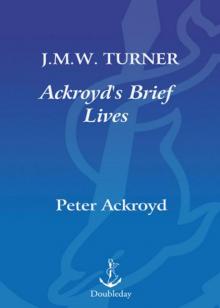 J. M. W. Turner
J. M. W. Turner Chatterton
Chatterton The Canterbury Tales – A Retelling
The Canterbury Tales – A Retelling Alfred Hitchcock
Alfred Hitchcock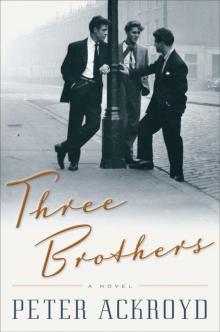 Three Brothers
Three Brothers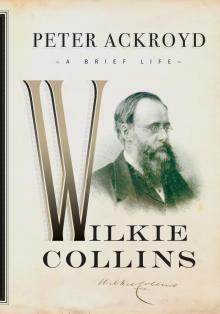 Wilkie Collins
Wilkie Collins Venice
Venice Poe
Poe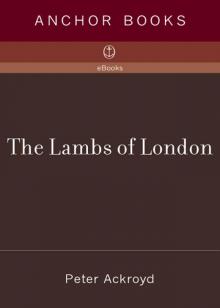 The Lambs of London
The Lambs of London London
London Queer City
Queer City Revolution, a History of England, Volume 4
Revolution, a History of England, Volume 4 Venice: Pure City
Venice: Pure City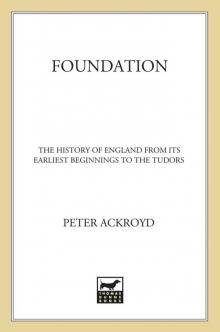 Foundation
Foundation Thames
Thames The Plato Papers
The Plato Papers The house of Doctor Dee
The house of Doctor Dee Rebellion: The History of England from James I to the Glorious Revolution
Rebellion: The History of England from James I to the Glorious Revolution Albion: The Origins of the English Imagination
Albion: The Origins of the English Imagination The Fall of Troy
The Fall of Troy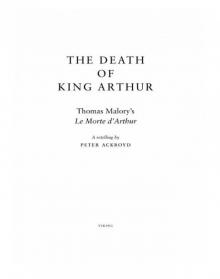 The Death of King Arthur
The Death of King Arthur The Trial of Elizabeth Cree
The Trial of Elizabeth Cree London: The Biography
London: The Biography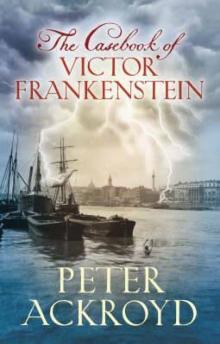 The Casebook of Victor Frankenstein
The Casebook of Victor Frankenstein Hawksmoor
Hawksmoor Charlie Chaplin
Charlie Chaplin London Under
London Under